Join More Than 50,000+ Subscribers and get latest camera news and rumors
NEW CAMERA VIDEOS ON YOUTUBE
|
By admin, on October 8th, 2024
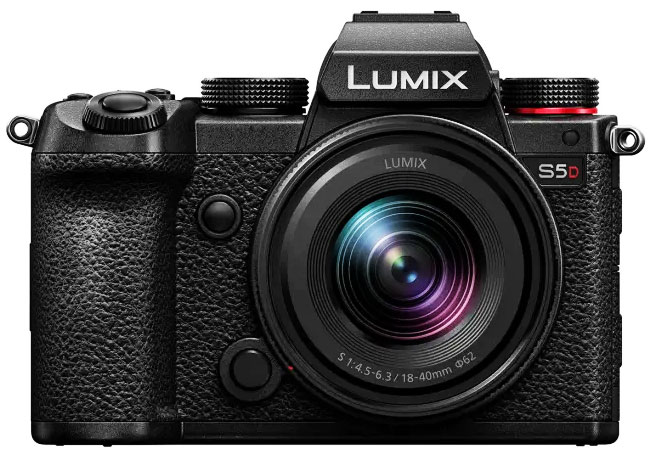
Panasonic has finally announced the Lumix S5D, the camera is actually a true successor or modified version of the original Panny S5. The camera retains the same 24.2MP sensor as the Panasonic S5, paired with the DFD (Depth from Defocus) contrast-detect autofocus system. This means the autofocus performance will remain slower and sluggish, aka less accurate than systems featuring phase-detect autofocus, unlike in the S5 II or S5 IIx models, where they have used the latest PHASE AF SENSORS.
Panasonic’s decision not to upgrade to a phase-detect autofocus system was likely to keep the price lower. To counter this, the S5D is compatible with DJI’s LiDAR system, which allows the latest Panny S5 camera to achieve faster and more precise autofocus. However, to use this feature, you must mount the camera on a DJI RS3 Pro or RS4 Pro stabilizer via a USB connection. Btw, with a little more effort and manul settings, u can use LiDAR even in Panasonic S5.
When considering the cost of adding a DJI RS3 Pro or RS4 Pro to this setup, it might be more practical to invest in the S5 II or S5 IIx, which already come with advanced autofocus systems built-in. The S5D feels more like a refresh of an older model, perhaps aimed at boosting sales of DJI stabilizers rather than offering groundbreaking improvements.
Panasonic S5D Major Specification
- 24.2MP Full-Frame CMOS Sensor
- Low pass filter : no
- Processor : Venus Engine
- Mount L
- Electronic viewfinder: OLED, 0.74 inch, 2.36 Mpts
- LCD screen : 3.2 inches, 1.84 Mpts
- Autofocus: DFD contrast detection
- Number of AF points : 225
- AF coverage : 100% (auto selection), 100×90% (manual selection)
- Automatic detection and tracking: Humans (head, eye), Animals
- AF range: -6 to 20 EV
- Sensitivity : ISO 100-51,200 (expandable from ISO 50 to 204,800)
- Burst (with mechanical shutter and AF tracking): up to 5 fps
- Burst (with electronic shutter and AF tracking): up to 5 fps
- Shutter speed: 60 to 1/8000 s
- Buffer : 24 JPEG + RAW; + 999 JPEGs
- Video: 4K 60p (with crop), 4K 30 fps, Full HD 60p, Slow motion Full HD 180p
- Storage: 1 x SD UHS-I + 1 x SD UHS-II^
- Wireless connectivity: Wi-Fi 5, Bluetooth 4.2
- Battery life: 450 images via LCD, 430 images via EVF
- USB charging: Yes, USB-C
- Tropicalization: Yes
- Dimensions: 132.6 x 97.1 x 81.9 mm
- Weight : 714 g
- Launch price : €1,599 (as a kit)
Panasonic S5D Press Release
Panasonic Unveils the Lumix S5D: A Powerhouse for Photographers and Videographers
October 8, 2024 – TheNewCamera.com
Panasonic has just introduced the latest addition to its full-frame mirrorless camera lineup, the Lumix S5D. Designed to cater to both photography enthusiasts and professional videographers, the S5D maintains the best features of its predecessor while adding some important upgrades.
The S5D comes equipped with a 24.2MP full-frame sensor—the same as the original S5—offering Dual Native ISO technology. This allows for better performance in low-light conditions, along with the ability to capture stunning detail and dynamic range with over 14 stops. The maximum ISO of 51,200 ensures the camera can handle even the toughest lighting conditions.
For advanced video creators, the recently announced Panasonic S5D supports 4K 60p/50p 4:2:0 10-bit internal recording, with 5.9K external recording option when paired with an Atomos recorder. This specific feature makes it ideal for hybrid shooters needing high-quality output for photos and videos or even pro cinematographer can opt it. Built-in Stabilization is also a standout feature, we have the same 5-axis in-body image stabilization (IBIS) as we have seen in S5 II, which can work in rythm with compatible lenses to provide up to 6.5 stops of shake reduction.
Panasonic will offer two different kit options for the Pannsonic S5D at launch: a kit with the newly announced 18-40mm f/4.5-6.3 lens, and another with the versatile 28-200mm f/4-7.1 zoom lens. Prices for the kits will start at €1599, making the S5D an attractive option for creators looking to enter the full-frame market without breaking the bank.
Expect availability by the end of October 2024. As always, stay tuned for more updates right here at TheNewCamera.com!
Panasonic S5D vs Panasonic S5 – Specification Comparison
Here is a comparison table of the Panasonic S5D and the original Panasonic S5 based on their major specifications:
| Specification |
Panasonic S5D |
Original Panasonic S5 |
| Sensor |
24.2MP Full-Frame CMOS |
24.2MP Full-Frame CMOS |
| Low Pass Filter |
No |
No |
| Processor |
Venus Engine |
Venus Engine |
| Mount |
L Mount |
L Mount |
| Electronic Viewfinder |
OLED, 0.74 inch, 2.36 Mpts |
OLED, 0.74 inch, 2.36 Mpts |
| LCD Screen |
3.2 inches, 1.84 Mpts |
3.0 inches, 1.84 Mpts |
| Autofocus System |
DFD contrast detection |
DFD contrast detection |
| AF Points |
225 |
225 |
| AF Coverage |
100% auto selection, 100×90% manual selection |
100% auto selection, 100×90% manual selection |
| Subject Detection |
Humans (head, eye), Animals |
Humans (head, eye), Animals |
| AF Range |
-6 to 20 EV |
-6 to 20 EV |
| ISO Sensitivity |
ISO 100-51,200 (expandable to ISO 50-204,800) |
ISO 100-51,200 (expandable to ISO 50-204,800) |
| Mechanical Shutter Burst |
Up to 5 fps |
Up to 7 fps |
| Electronic Shutter Burst |
Up to 5 fps |
Up to 7 fps |
| Shutter Speed |
60 to 1/8000 s |
60 to 1/8000 s |
| Buffer |
24 JPEG + RAW; + 999 JPEGs |
24 JPEG + RAW |
| Video Recording |
4K 60p (with crop), 4K 30p, Full HD 60p, Slow motion Full HD 180p |
4K 60p(with crop), 4K 30p, Full HD 60p |
| Storage |
1 x SD UHS-I + 1 x SD UHS-II |
1 x SD UHS-I + 1 x SD UHS-II |
| Wireless Connectivity |
Wi-Fi 5, Bluetooth 4.2 |
Wi-Fi 5, Bluetooth 4.2 |
| Battery Life |
450 images (LCD), 430 images (EVF) |
440 images (LCD), 470 images (EVF) |
| USB Charging |
Yes, USB-C |
Yes, USB-C |
| Tropicalization |
Yes |
Yes |
| Dimensions |
132.6 x 97.1 x 81.9 mm |
132.6 x 97.1 x 81.9 mm |
| Weight |
714 g |
714 g |
| Launch Price |
€1,599 (with kit lens) |
$1,997 (body only) |
Key Differences between the new Panasonic S5D and the Panasonic S5:
- The first noticeable advantage in the body is the Panasonic S5D has a slightly larger LCD screen (3.2 inches vs. 3.0 inches on the S5).
- Burst speed or Continuous shooting speed with both the mechanical and electronic shutters is lower on the S5D (5 fps) compared to the original S5 (7 fps). So we don’t know the exact reason why Panasonic decided to keep it slow in the new model.
- The New Panasonic S5D offers compatibility with DJI’s LiDAR system for improved autofocus when paired with a stabilizer like the DJI RS3 Pro, which is not an official feature on the original S5, but yes you can use it if you wish to.
- Video recording capabilities are similar as Panny original S5, but the S5D now officially supports slow-motion Full HD at 180p.
Overall, the Panasonic S5D is almost a copy of the original S5, with subtle updates like LiDAR compatibility and a slightly larger screen, though it retains the same sensor and processor.
TNC Take – I was expecting a proper announcement from Panasonic but its an just an refresh which can be done with a firmware update too, even with the older Panasonic S5 bodies.
By admin, on October 7th, 2024
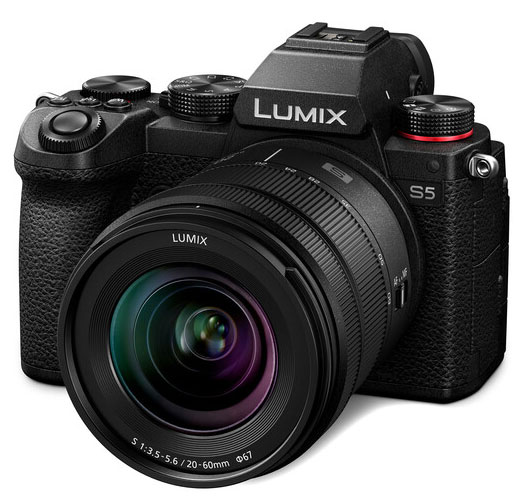
According to the latest rumor, the Panasonic S5D camera may arrive on October 8, 2024. It has been reported that the camera will be a slightly updated version of the Panasonic S5. It will feature a new OLED electronic viewfinder, and the price with the kit lens will be somewhere around $1599.
Panasonic S5D initial specification
- Slightly updated S5 camera
- New Oled EVF
- Price with kit lens is 1599 Euro
- Lens Panasonic Lumix S 18-40mm f/4.5-6.3 Lens
There are also strong rumors about the Panasonic S1 H Mark II camera and Panasonic S5R camera
Follow us on our social pages FACEBOOK | TWITTER | INSTAGRAM, to get LIVE News and Panasonic Rumor
source – Lrumors
By admin, on October 7th, 2024
Finally, the day arrived when Fuji started teasing the announcement of the Fuji X-M5 camera. Finally, after a long gap of Fuji X-S20, we will have a dedicated vlogging camera from Fujifilm. Let’s celebrate its arrival 🙂
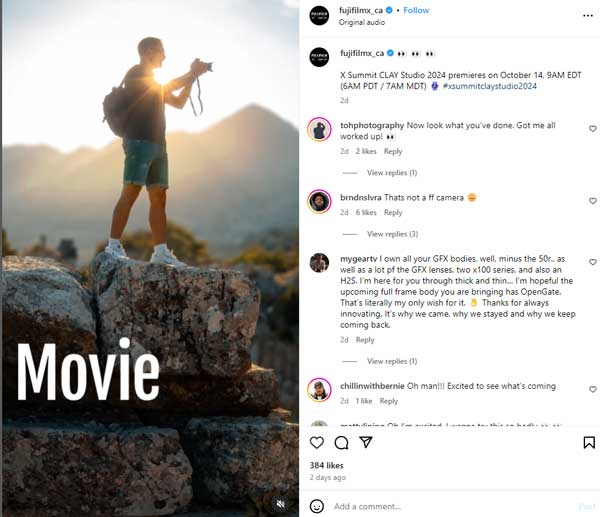
Announcement will happen on X Summit CLAY Studio 2024 on October 14, 9AM EDT (6AM PDT / 7AM MDT).
Leaked Image of the Fuji X-M5 By Fuji Rumor Mill
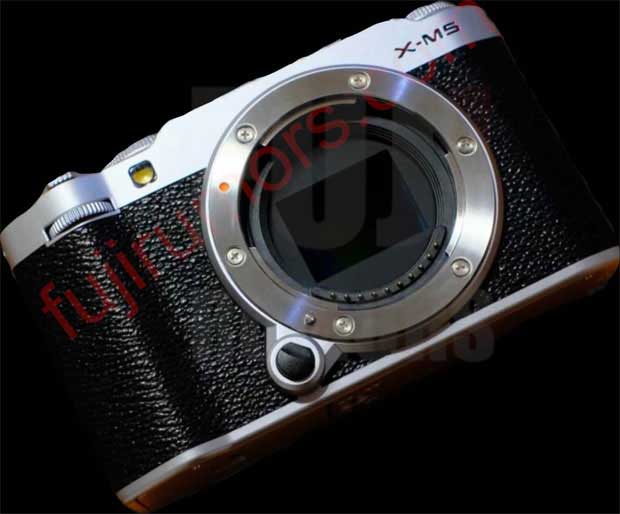
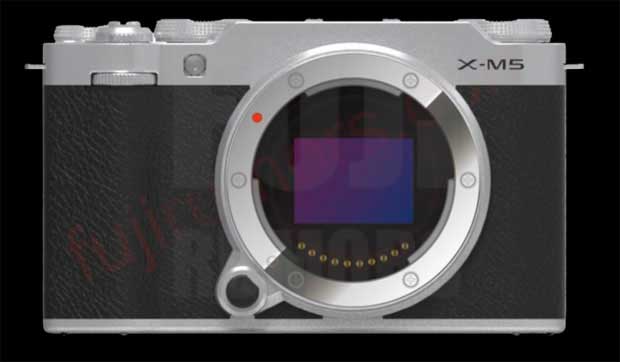
Fuji X-M5 Specification
- 26.1MP APS-C X-Trans BSI CMOS 4 Sensor
- X-Processor 5 Image Processor
- DCI/UHD 4K at 60 fps [4k 120 fps with crop]
- Dedicated Vlog Mode for Content Creators
- 425-Point Hybrid AF System
- Frame.io Camera to Cloud Integration
- 20 Film Simulation Modes
- 3.0″ 1.62m-Dot Vari-Angle Touchscreen
- Bluetooth and Wi-Fi Connectivity
- Announcement October 14, 2024
- Arrival: On or before Nov 2024 [may get delayed]
Stay tuned more updates coming
Follow us on our social pages FACEBOOK | TWITTER | INSTAGRAM, –> See More Fuji Rumors Or subscribe to us via Email
source of images – Fujifrumors.com
By admin, on October 5th, 2024
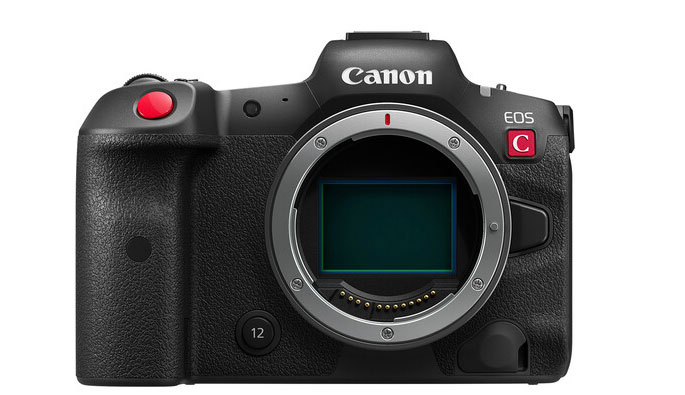
Canon R5C Mark II Early specifications surfaced over the web, there is a high probability these specs are of one of the EARLY PROTOTYPE of the upcoming camera, in genral a camera maker tests several prototypes of a high-end camera before the finalize the production line version. Take a look at the set of specs, of the upcoming Canon R5C Mark II camera
Canon R5C Mark II Rumored Specification
- Dual System Design with Active Cooling:
The Canon R5C Mark II will continue the “dual system” setup as we have seen in the original Canon R5C, where the camera can function as both a high-performance stills camera (like the R5) and a cinema camera (for video production). The mention of a “square, thickened active cooling body” indicates that the upcoming R5C II will have an enhanced thermal management system, likely allowing uninterrupted recording in every ALL available resolution of the camera.
- Introduction of SDI Interface: Now, that’s the most important part of the rumored specs we have read so far, the Canon R5C Mark II upcoming camera will use or have an SDI port. Again as per the source, the camera maker may swipe the HDMI in favour of SDI, or they may keep both as an option to the user. SDI is typically more reliable and provides better signal quality over longer distances, which is a common requirement in professional video setups.
- The 4K RAW Video Changes: No lower quality 4K SRAW (which was a lower-resolution form of RAW), but instead will feature a higher-resolution format: 4096×4320 pixels. This is a sub-pixel merging technique, which effectively produces a more detailed “native” 4K output by using higher-resolution data and downsampling it intelligently. This likely improves image quality in terms of sharpness and color accuracy.
- The 4K/24-60p YUV Video: Introduction of Custom Sensor READOUT speed pattern as per user requirement
The R5C II offers a YUV video format in 4K resolution, with two modes:
- High-Quality Mode (8192×4320 Sampling): Here, the camera samples from an 8K resolution (8192×4320) to produce a very detailed 4K output.
- High-Speed Mode (4096×4320 Sampling): This mode uses 4K footage but samples it horizontally rather than vertically. This adjustment could be aimed at optimizing performance while maintaining good color depth and resolution in YUV422 format (commonly used in professional video work).
Overall, if we look at the rumored set of core specifications, the Canon R5 Mark II camera features enhanced core specifications compared to the original Canon R5C, especially in terms of resolution and video output options.
Stay tuned more updates are coming
Also, see – Canon Selling 2X More Cameras than Sony in China
Get Canon Latest 28-70mm F2.8 Lens from Amazon.com – B&H Store – Support this website
Support us – Use or affiliate link Amazon.com | B&H Store for the next purchase u make – it helps us
Get LIVE RUMORS –> FACEBOOK | TWITTER | INSTAGRAM to get live news + Canon rumors 24X7
source – E8M_8888
By admin, on October 5th, 2024
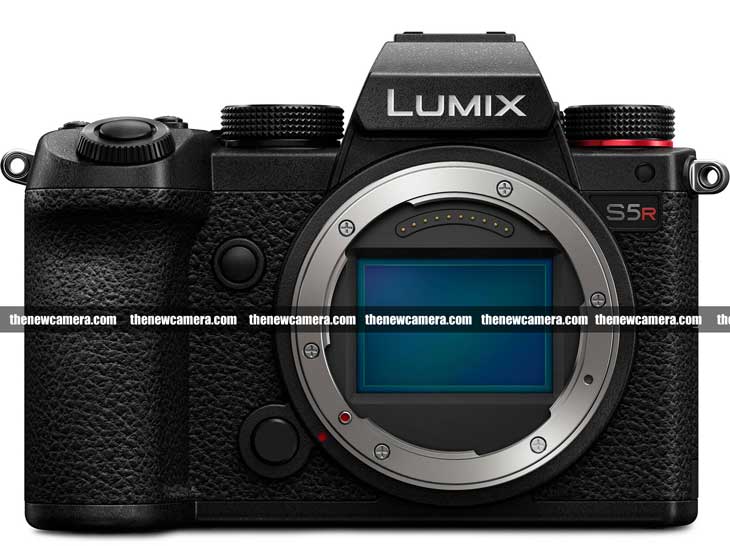
In August, we posted information that Panasonic is preparing to announce the Panasonic S5R camera. Today, the Panasonic S5R video core specification leaked by popular source E88_8888 Take a look,
Panasonic S5R Video Core specification
- 8K FF 16:9 30fps 25ms (Readout speed)
- 5K S35 4:3 48fps 20ms Oversampling
- 5K S35 16:9 60fps 15ms Oversampling
- 4K S35 16:9 60fps 15ms Oversampling
- 5K FF OG 3:2 60fps 10ms Pixel-to-Pixel
- 5K FF 16:9 60fps 9ms Pixel-to-Pixel
- 4K FF 16:9 96fps 9ms Oversampling
- 4K FF 1.25x crop 120fps 7ms Pixel-to-Pixel
- Dynamic Range: FF 16EVs (FF4K)
Stay tuned more updates are coming
Also, We have published the core specifications of the to-be-announced Panasonic S1H Mark II Camera back in AUGUST 2024, have a look
Panasonic S1H II Rumored Specs
- 100dB DCG-HDR 22.5 megapixels BSI CMOS sensor
- Triple native ISO 640/2500/10000
- DR Boost on 3240p/80fps, 2160p/120fps, 1080p/240fps
- Super-fast phase hybrid autofocus
- ProRes RAW and ProRes RAW HQ internal recording
- 17stop Arri LogC4 gamma profile
- Built-in dual fans for unlimited recording
- 60 fps burst shooting with AE/AF and pre-capture
- Dynamic resolution function via subPDs with interlaced bayer CFA
- Full Frame Open Gate /120fps (SSR: 5760×3840)
- Full Frame 16:9 3240p/160fps (SSR: 5760×3240)
- Full Frame 16:9 2160p/240fps (SSR: 5760×2160)
- Full Frame 16:9 1080p/480fps (SSR: 5760×1080)
- Super 35mm A6:5 3240p/160fps (SSR: 3840×3240)
- Super 35mm 16:9 2160p/240fps (SSR: 3840×2160) Super 35mm 16:9 1080p/
- 480fps (SSR: 3840×1080)
- HEVC 10bit 4:4:4 Intra/LongGOP, AVC 10bit 4:2:2 Intra/LongGOP codecs at all resolution
- 9.44M ultra-bright 40 00nits 120Hz EVF
Latest Patent from Panasonic – Panasonic Working on BOX Style Cinema Camera With Optional Handgrip
Also, see – Panasonic S5R Latest Rumors
Follow us on our social pages FACEBOOK | TWITTER | INSTAGRAM, to get LIVE News and Panasonic Rumor
source E88M_8888
By admin, on October 4th, 2024
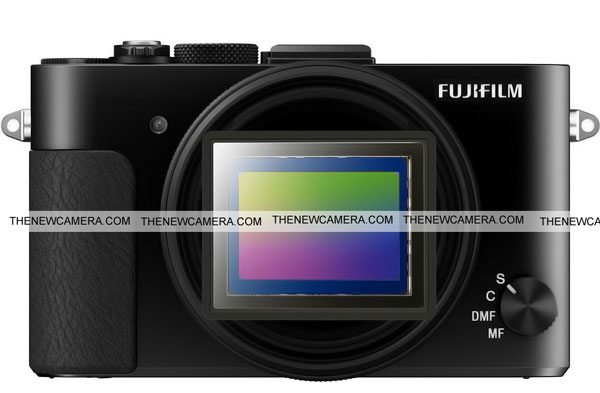 Fuji’s next full-frame compact can become a spiritual successor of the Sony RX1R camera According to the latest rumors, Fuji will introduce a new sensor size. The Fuji rumor mill very clearly writes it, they are talking about a new sensor size. After that post, many speculations started, but the most trusted rumor mill right now, Sony Alpha Rumor, believes that Fuji will announce a full-frame camera. The big reason behind this is the popularity of the Fuji X-100 VI camera. Now, they want to move further and expand the consumer base of compact mirrorless lovers by introducing a full-frame compact mirrorless camera.

Since this very moment, we don’t know what exactly is coming in the next, It may not be an interchangeable-lens mirrorless camera, as none of Fuji’s lenses are compatible with full-frame cameras. But again, there is a huge scope for a compact FF camera.
Also, see – 80MP in the Fuji X-H3? Fuji Fans Think It’s Within Reach
The other piece of information we received a few days ago, and published on our website, is that if Fuji adopts EXR technology instead of X-TRANS in their existing sensors, there is a huge potential to approximately double the resolution and enable single-click HDR capture with their existing sensors, just by taking out the color filter array as they did with the EXR sensor-based cameras in the past. That’s the news we received from a Chinese source, indicating they may alter the sensor’s color filter array shortly to upscale the existing APS-C technology. So, that’s another set of information to consider when talking about the arrival of a brand-new sensor, unless they rework the existing color filter technology in their cameras.
Follow us on our social pages FACEBOOK | TWITTER | INSTAGRAM, –> See More Fuji Rumors Or subscribe to us via Email
SRC – FR.com Via – SARYT
By admin, on October 3rd, 2024
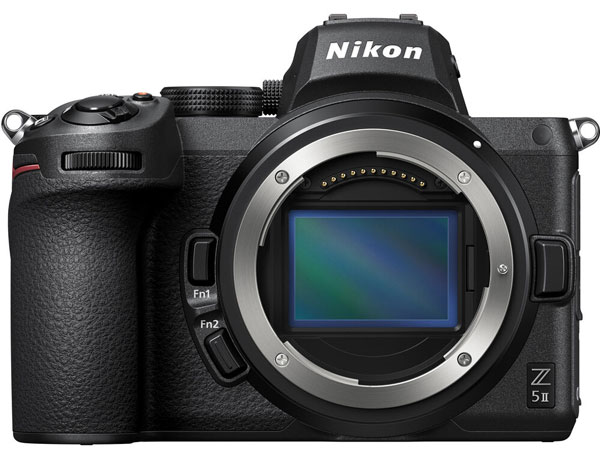
Nikon Z5 Mark II is rumored to arrive in Q1 of 2025, while there may be confusion (from our side) in understanding the shipping and announcement date, but yes the arrival of the Z5 II is certain, as per the latest rumors surfaced over the web. Take a look at the initial set of rumored specs of the Nikon Z5 Mark II camera
Nikon Z5 Mark II Rumored Specification
24.5MP FX-Format BSI CMOS Sensor
EXPEED 7 Image Processor
UHD 4K30 Video; 1.5x 60p with crop N-Log & 10-Bit HDMI Out
5-Axis Sensor-Shift Vibration Reduction
Built-In Wi-Fi and Bluetooth
Dual SD UHS-II Card Slots
stay tuned more updates are coming
Also see
Nikon First Small Step – New Luts From RED
Nikon KOMODO Z – What Can We Expect from Nikon?
Follow us on our social pages FACEBOOK | TWITTER | INSTAGRAM to get live Camera News + Nikon Rumors 24X7
|
KEEP THIS BLOG ALIVE - Support New Camera Buy Canon Lenses, Buy Music CD or Digital Camera at amazon it helps this site, and you do not pay anything extra, it is just a way to help support this site.

|















